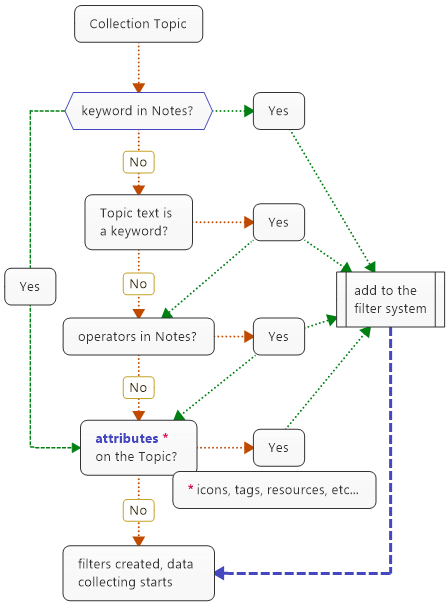|
Data Collection mechanism
|


|
This section discusses how the Data Collection Engine determines WHAT to collect and FROM WHERE to collect the data?
We have already talked about the collection sources - they are specified either directly in the collection map, or in the collection configuration.
As for WHAT - a special macro language has been developed for the data collection engine, its commands directs the program what to collect.
The Configuration Map has about 40 predefined keywords that define the data collection criteria. Each keyword has a Macro Language commands in its notes. Keep in mind that the program requires these commands for the data collection to work. You may not know precisely how they work, so do not modify them unless you know what you are doing!
The following schema illustrates the data engine’s decision logic:

Operators are the macro language commands.
Note: after the Date Collection Engine detects a keyword in the first line of the topic notes, it ignores further information in the topic notes (and also ignores the topic text, even if it's a keyword). It is the easiest way to free the collection topic from the keyword using the structure that promotes greater clarity:

In this example the This week keyword is used in the topic notes and not the topic text. This topic will collect all the tasks for this week.
If you want to flexibly configure a topic to collect specific data (complex filter), you should use data collection macro-language operators (commands) in topic notes.
Using this methodology, you can create templates with keywords defined in the configuration map. Furthermore, this allows you to tune topics in templates flexibly by adding keywords and topic notes that modify collection behavior, without altering the configuration map.
You can also add the No Entry icon to a topic to stop the Data Collection Engine from collecting data from that and any associated branches.